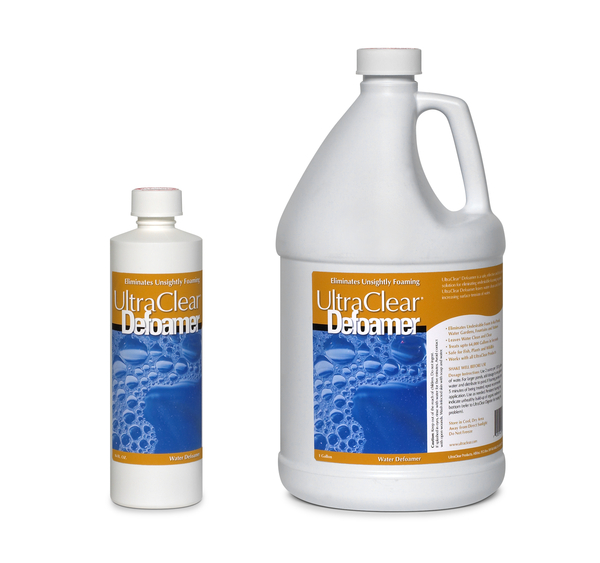How Defoamers Help Improve Performance in Coatings and Paints
How Defoamers Help Improve Performance in Coatings and Paints
Blog Article
How Defoamers Improve Performance in Manufacturing and Manufacturing

Recognizing Defoamers
Defoamers play a critical function in various making procedures by successfully combating the formation of foam, which can disrupt procedures and impact item quality. Foam can develop in numerous contexts, such as during mixing, home heating, or chemical responses, potentially bring about inadequacies and variances in items. The system through which defoamers run generally includes lowering the surface area tension of the fluid, allowing bubbles to climb and coalesce to the surface area quicker, where they can then break.
Defoamers are formulated from a variety of chemical compounds, including organic products, silicones, and surfactants, each tailored to specific applications and procedures. The selection of defoamer depends on aspects such as the type of product being refined, temperature level, and the visibility of various other ingredients. Efficient defoamers not only decrease foam development but also preserve compatibility with the item, ensuring that there are no unfavorable effects on the last result. Recognizing the residential properties and features of defoamers is essential for producers aiming to maximize their procedures, improve efficiency, and keep the integrity of their products.
Secret Benefits of Defoamers
Using defoamers in making procedures supplies a series of considerable benefits that improve functional effectiveness and product quality. One of the key benefits is the decrease of foam formation throughout production, which can block equipment and interrupt workflows. By decreasing foam, defoamers make sure smoother operations, bring about reduced downtime and upkeep expenses.
Furthermore, defoamers boost item consistency by avoiding air entrapment, which can jeopardize the honesty of the last product. This is especially important in industries where aesthetic look and appearance are essential, such as in paints, layers, and food. Enhanced item quality not only satisfies consumer assumptions but likewise enhances brand name online reputation.
Moreover, defoamers can assist in optimizing source use. By enhancing the performance of raw material use, they add to set you back financial savings and lowered waste, aligning with sustainability objectives. Lastly, the application of defoamers can bring about much shorter handling times, allowing manufacturers to increase production capability without substantial capital expense - defoamers.
Applications in Different Industries
In making procedures throughout numerous sectors, the application of defoamers plays an important function in enhancing efficiency and item quality. These chemical additives are used in industries such as food and beverage, pharmaceuticals, and textiles to alleviate foam-related difficulties.
In the food and beverage industry, defoamers are important during the fermentation process, avoiding foaming that can interfere with manufacturing and spoil the item's stability. In the pharmaceutical industry, defoamers are utilized in the solution of fluid medications, guaranteeing uniformity and stability while minimizing waste.
Fabric manufacturing likewise benefits from defoamers, as they are made use of in coloring and completing procedures to advertise even distribution of chemicals and dyes. This application not only improves the end product's look but additionally decreases the amount of water and energy consumed throughout production.
Furthermore, in the paper and pulp sector, defoamers help preserve procedure performance by decreasing foam that can prevent machinery efficiency. In general, the varied applications of defoamers throughout these sectors underscore their value in optimizing manufacturing procedures and supplying high-quality items.

Choosing the Right Defoamer
Selecting an ideal defoamer is crucial for making more info here the most of performance and quality in making procedures. The choice of defoamer relies on various variables, consisting of the details application, the sort of foam being generated, and the solution of the item being produced.

Firstly, consider the chemical compatibility of the defoamer with other components in your solution. A defoamer that connects adversely with various other elements can negatively influence product high quality. Furthermore, the temperature and pH array during processing are critical; some defoamers do ideally under specific conditions while becoming inadequate in others.
Second of all, examine the defoamer's performance characteristics, such as its ability to promptly lower foam and its persistence during manufacturing. It is crucial to select an item that not only eliminates foam quickly yet likewise keeps its performance with time.
Lastly, take into consideration regulatory and environmental elements, especially if your manufacturing procedure undergoes stringent conformity important site requirements. Choosing a naturally degradable or low-toxicity defoamer can help satisfy sustainability goals while making sure operational effectiveness. By attentively examining these criteria, makers can make educated decisions that boost productivity and product integrity.
Best Practices for Application
Successful execution of defoamers in manufacturing procedures calls for careful preparation and adherence to ideal methods. Choosing the ideal defoamer, as formerly discussed, is vital; guarantee it is compatible with the materials entailed and resolves the recognized foaming issues successfully.
Following, preserve clear interaction with all stakeholders, including operators and top quality control groups. Training sessions can assist make certain that every person comprehends the dosing treatments, possible influences on item top quality, and security factors to consider. Applying a trial stage can additionally be valuable; display performance very closely to assess efficiency and make needed modifications.
Additionally, regular screening and surveillance of foam levels can give useful insights right into the defoamer's performance gradually. Changing dosages in feedback to modifications in production variables will certainly aid preserve optimum efficiency - defoamers. Documenting all procedures and results promotes continuous renovation, permitting for fine-tuning of defoamer use and boosting overall efficiency in producing procedures.
Verdict
In recap, defoamers play an essential duty in enhancing performance within production and manufacturing procedures. By decreasing foam formation and helping with bubble coalescence, defoamers contribute to boosted product top quality, uniformity, and functional performance.
The benefits expand to item top quality and price financial savings, as defoamers assist improve processes.Defoamers play a critical duty in numerous making processes by effectively combating the development of foam, which can influence and disrupt procedures product high quality. Recognizing find more info the buildings and functions of defoamers is necessary for suppliers aiming to enhance their procedures, improve performance, and keep the stability of their items.
Making use of defoamers in making processes offers a variety of considerable advantages that improve functional efficiency and product top quality.In addition, defoamers boost item consistency by preventing air entrapment, which can endanger the integrity of the last item.
Report this page